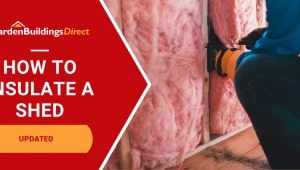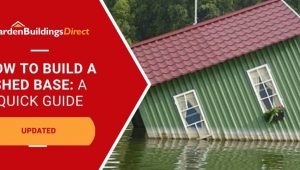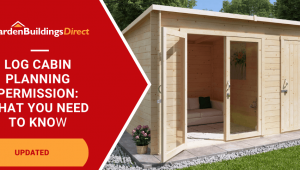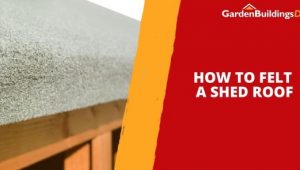Jump to:
Metal sheds do not specifically draw lightning. However, they do still pose some risks associated with lightning strikes. A metal shed can conduct electricity if struck, posing potential danger to both the shed and anything inside. In this article, we’ll explain how lightning interacts with metal structures and offer safety tips to protect your shed and belongings.
Metal Sheds Lightning Explained
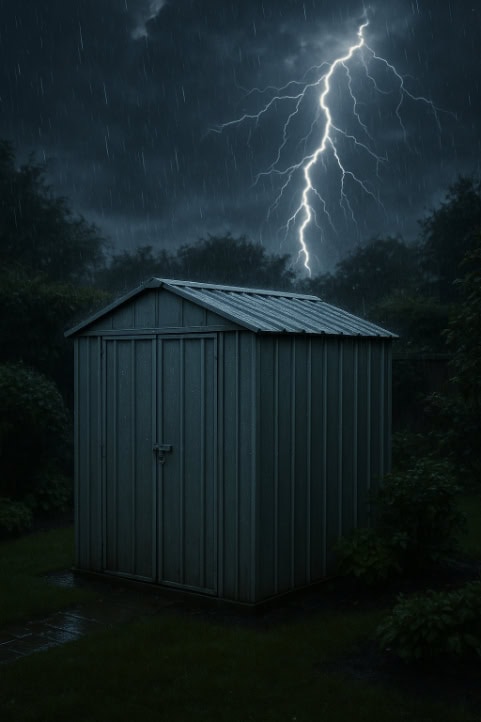
The safety of a metal shed comes down to where the charge or electricity is directed. The real danger doesn’t come from the shed attracting lightning, but from how it handles a strike if one happens.
Metal conducts electricity fast, so it needs a safe path directed underground. That’s where grounding comes in, where a strike can pass through. On the flip side, the current might spread across the frame, tools, or even the floor, causing damage.
Do Metal Sheds Attract Lightning?
No, metal sheds do NOT attract lightning. A lot of people assume that because the material is a good conductor, but lightning isn’t drawn in like that.
Lightning is more likely to hit the tallest object in an open space, e.g. a tree, a pole, or the roof of a house. A metal shed only becomes part of the picture if it happens to stand taller or sit in a clear, exposed spot.
Suppose a strike does happen, the real concern is being inside when it occurs. The shed won’t pull lightning toward it, but because it’s metal, it will carry the charge quickly if it does get hit.
Metal Sheds in Thunderstorms
During a thunderstorm, the safest choice is to stay out of a metal shed. Don’t think about stepping inside to take cover from the rain; head into another building instead. It’s for your own safety, even with the lower chance of lightning hitting it. As mentioned, if it does hit, touching any part of the structure at that moment could give you a severe shock.
Another risk comes from what’s inside the shed. Power tools, extension cords, or stored fuel can all add to the danger. Electricity from a strike could jump into those items and cause fire or damage. If possible, move them into a garage or the house.
Why Metal Sheds Conduct Electricity
When lightning makes contact with the shed, the metal gives the electricity a path to travel. That’s what being a conductor means. The charge doesn’t stop at the roof; it runs through the frame, the walls, and anything connected to them. That’s why a strike can set off sparks, damage tools leaning on the walls, or even reach the floor.
Any items resting against the walls will carry the charge. Damp ground underneath can also spread it further. With grounding, the energy has a single safe path instead of moving through the structure.
If you’re considering purchasing a metal shed and want to make an informed decision about materials, safety features, and installation, check out our comprehensive shed buying guide for expert advice on choosing the right one for your needs.
How to Ground a Metal Shed for Lightning Safety
Here’s how you can do it:
- You’ll need a copper grounding rod at least six to eight feet long. Plus, a heavy-duty grounding wire and clamps made for electrical use.
- Push or hammer the rod into the ground next to the shed. The deeper it goes, the better it carries electricity away.
- Attach the grounding wire from the rod to a solid part of the shed’s frame.
Grounding won’t stop lightning from landing on the shed, but it controls what happens after. The energy has a safe exit, and your shed is far less likely to take damage.
Over time, clamps can loosen and wires can corrode. Conduct an inspection at least once or twice a year for maintenance purposes.
Note: If your insurance policy or building regulations need certified work, hire a pro.
FAQ
Can lightning damage a metal shed?
Yes, it can. Damage ranges from burns on the metal to fires inside if tools, fuel, or wires are present. Grounding lowers this risk.
Do I need to ground a small metal shed for lightning safety?
Yes, grounding helps no matter the shed size. A smaller shed may seem less risky, but once lightning makes contact, the energy still needs a safe exit.
Is it safe to stay inside a metal shed during a thunderstorm?
No. Even with grounding, the risk is there. Go inside the house and stay away from metal walls, doors, and stored items that can carry the charge.
